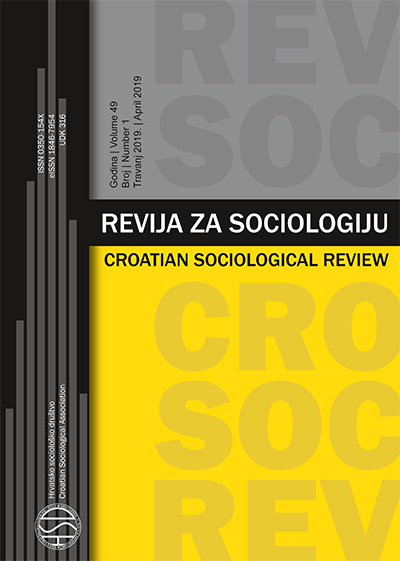Što vrtić ima s tim? Pristup ranom i predškolskom odgoju i obrazovanju i reprodukcija društvenih nejednakosti u redovnom školovanju: analiza podataka PISA i TIMSS istraživanja
What’s Kindergarten Got to Do with It? Access to Early Childhood Education and Care and Reproduction of Social Inequalities in Regular Education: Analysis of PISA and TIMSS Data
Author(s): Teo Matković, Ivana Dobrotić, Jelena BaranSubject(s): Social Sciences, Education, Social differentiation, Sociology of Education
Published by: Hrvatsko sociološko društvo
Keywords: early childhood education and care; PISA; TIMSS; reproduction of social inequalities; cognitive achievement;
Summary/Abstract: Numerous studies have pointed to the importance of early childhood education and care (ECEC) for the development of children’s cognitive skills and their preparation for school, with the ECEC effect generally being stronger for the children coming from the families of lower socioeconomic status (SES). Empirical analyses of social inequalities in access to education and school achievement in Croatia have been primarily focussed on the later stages of schooling, while the ECEC area remains unexplored. The aim of this paper was to establish patterns of association between ECEC attendance and the cognitive achievements of children aged 10 and 15 in Croatia. More specifically, using the data collected for Croatia within the several waves of the PISA and TIMSS studies (2009–2015), we examined whether there was a link between ECEC attendance and subsequent level of cognitive skills in mathematics, reading and natural sciences (general positive contribution), and whether this effect differed with respect to parents’ SES (compensatory effect). The analysis did not support the compensatory effect hypothesis, but in most cases a certain general contribution of long-term ECEC attendance to the cognitive achievements of pupils was found (ranging from one-fifth to one-tenth of the span of a single “level of proficiency” in TIMSS and PISA tests) which cannot be explained by parents’ education or profession, migration background, household composition or local environment features. Observed within the context of the Croatian ECEC system and huge inequalities found in the frequency and duration of children’s ECEC attendance in regards to parents’ SES, the paper additionally points to the mechanism of effective maintenance of education inequalities in Croatia, which may be reduced by further expansion of the ECEC system.
Journal: Revija za sociologiju
- Issue Year: 49/2019
- Issue No: 1
- Page Range: 7-35
- Page Count: 29
- Language: Croatian

